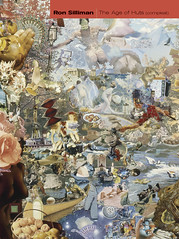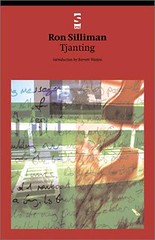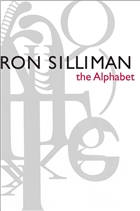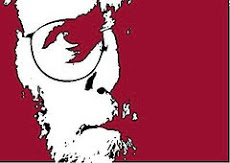I pulled out Michael Lally’s None of the
Above: New Poets of the USA (Crossing Press, 1976), searching for that quote
I used from Jim Gustafson in my note about Joseph Massey’s Minima St. But instead of putting the anthology back after getting
what I needed, I’ve left it sitting on my desk and have been rereading it for
the first time in years.
The book is a juicy time
capsule, an excellent cross section of literary tendencies that were active
among younger poets during the middle of that decade. Most visible are a
somewhat blurry, already diverging version of the New York School (Phillip
Lopate, Paul Violi & Hilton Obenziner from the uptown scene*, Alice Notley,
Maureen Owen & Bernadette Mayer from St. Marks, a pre-Texas Lorenzo Thomas,
Joe Brainard), langpo (Mayer of course, Bruce Andrews, Ray Di
Palma, P. Inman, Lynne Dreyer, yours truly) & a post-Iowa but “anti-workshop”
phenomenon of the period that for want of a better term was called Actualism in
those days: Darrell Gray, George Mattingly, Dave Morice and Gustafson. In
addition to Inman & Dreyer are three other Washington , D.C.
Twenty-six years shifts
perceptions around a bit, so that one reads these texts to some degree knowing
which writers one still reads with interest and enthusiasm a quarter century
hence. Lally’s own interests and blinders are evident
enough – that is a remarkably East Coast version of langpo, for example. And
with the exceptions of Kyger and myself, writers whose
linkage to the New American poetry is to anything other than the New York
What intrigues me today is
the fate of Actualism, which as a phenomenon has largely disappeared over the
past two decades. The term itself was taken from the Actualist Conventions put
on in Berkeley
Perhaps the most important
thing to note is that Actualism was an -ism
that never sought to be any sort of movement – the anarcho /
anti-organizational impulse was very strong. If anything, the Actualist
Conventions were themselves a spoof of the least attractive aspect of their
surrealist predecessors+. The one other serious manifestation of the phenomenon
was an even smaller Actualist Anthology
(1977, The Spirit That Moves Us), edited by Gray & Morty Sklar.
On some level, Actualism
might be thought of as how the impact of Ted Berrigan resonated through Iowa City San Francisco Chicago Chicago
Nisbet has gone on to become a novelist of neo-noir
thrillers, Abbott & Mattingly teach at Naropa & New College Detroit
I do still sense the impact
of the Actualist frame of mind in everything from the Coffee House Books
catalog to the Exquisite Corpse website. But if you want some feel for how
Actualism fit in back in its heyday, None
of the Above contextualizes it best. The rare book website, abebooks, lists 10 copies reasonably priced
in stores around the U.S. Don e About It,” another “Behind the Myth of Scholastic
Aptitude,” and the third by children’s book author, Rosemary Wells.
* Although
Hilton had already moved west and was immersed in political organizing by then.
** An email I sent to
Linda Russo on April 28, 1998 fills in what I mean by this. It’s
part of the Joanne Kyger web page at the Electronic Poetry Center
***
Unfortunately, the anthology form, especially in this rather short collection
of 31 poets in 224 pages, didn’t permit any samples of Whiting’s
longer works.
+ In
addition to every form of performance art imaginable, the Actualist Conventions
also included every kind of poetry.





